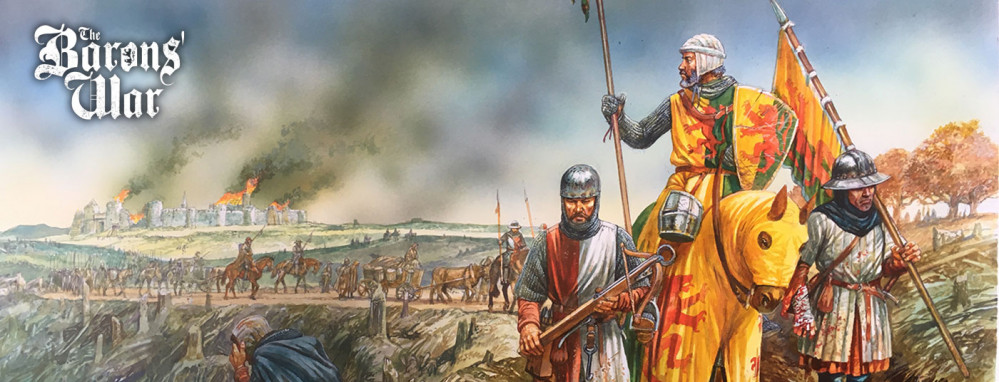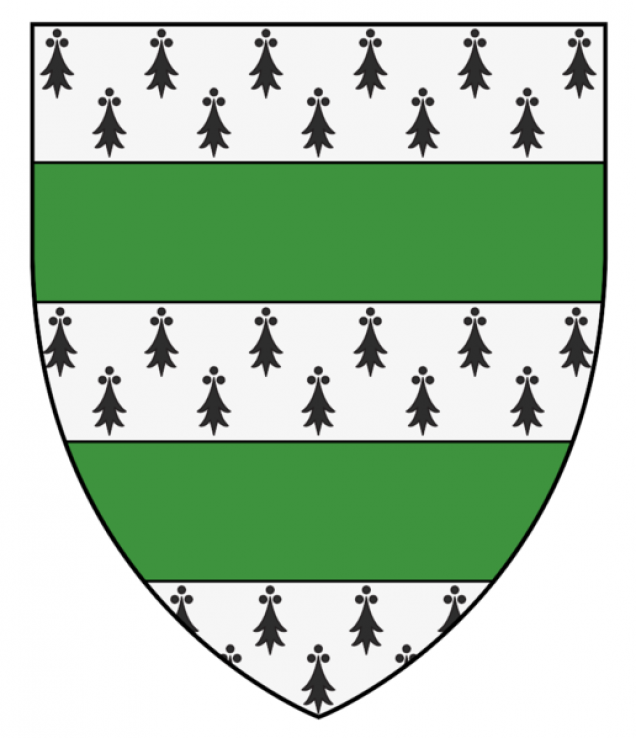
PanzerKaput Goes To Barons' War
William de Lanvalei
William de Lanvalei III (d. c. 1217), lord of Walkern (Herts.) was a member of a family of curialist administrators that had risen to prominence under Henry II and who owed much of their wealth to their years of service to the Crown and the opportunities for enrichment which these offered. It is a mark of King John’s mismanagement of the nobility that he should have so alienated such a man that he ended up on the baronial side in 1215.
William was the grandson of the founder of the family fortune, William de Lanvalei I, a Breton whom Henry II appointed as his first seneschal, or administrator, of Rennes after his takeover of the duchy of Brittany in 1166. William served in the office for five years, crossing to England in 1171 or 1172 to become the king’s castellan of Winchester and serving thereafter in a variety of capacities in the king’s English administration. Probably as a result of his royal connections, William was awarded the hand in marriage of Gunnora, daughter and heiress of Hubert de Saint Clair, through whom he gained possession of the barony of Walkern, created for Hubert’s father, Hamo, in 1120 from the escheated lands of Eudo Dapifer (Eudo the Steward). William I died in 1181/2, leaving a son William II, who died in 1204, and was in turn succeeded by William III, the member of the Twenty Five, a minor on his father’s death.
Like most thirteenth-century aristocratic families, the Lanvaleis had various claims to lands and offices which they pursued as and when opportunity and circumstance afforded. William’s father had brought a suit in the king’s courts against Hugh de Beauchamp over the manors of Eaton Socon and Sandy (Beds.), to which he laid claim by descent from his mother as successor to Eudo Dapifer, who had held the manors in 1120. Hugh appears to have lost possession of the manors for a time, as Gunnora was briefly in possession, but the Lanvaleis failed to establish a lasting title. William III’s own interest was rather in securing control of the royal castle at Colchester, again by right of descent from Gunnora. In Henry II’s reign the castle had been held by the justiciar Richard de Lucy, but the Lionheart had apparently granted it to William’s father, and he and his widow held it until 1209. In that year it was apparently lost to the family.
William accompanied John on his expedition to Poitou in 1214 and was present at the truce concluded with the French king in September. It is impossible to trace the path by which he made his way into the baronial camp, but for him, as for others, the ties of kinship must have played a part. He was related to none other than Robert FitzWalter, the baronial leader, through his wife’s mother, who was FitzWalter’s niece. His own mother, moreover, was sister-in-law of Geoffrey FitzPeter, which made her the aunt of another future rebel, Geoffrey de Mandeville. William can thus be seen as belonging to the wide east of England network which was increasingly dominant in the baronial movement as it spread from its northern heartland.
In July 1216, probably at a meeting of the council at Oxford, William secured a grant of custody of Colchester castle, for which he had striven for so long. He died shortly afterwards, leaving as his heir a daughter Hawise, who became the ward of Hubert de Burgh, the future justiciar, and was married by Hubert to his John, to whose family the barony passed.
It is tempting to associate the fine Purbeck marble effigy of a knight in the south aisle of Walkern church (Herts.) with this William, as lord of the manor. It shows the commemorated in a mail hauberk, a surcoat and a pot-style tournament helm. The effigy is one of a group of elegantly designed figures which includes three of the famous Temple Church effigies. On stylistic grounds the effigy can be dated to c. 1240-50, close enough in time to make William a possible candidate. The equally fine effigy of King John in Worcester Cathedral was not commissioned until the mid 1230s, some twenty years after the king’s death. One reason for associating the effigy with William is that he was the last of his direct male line, and the commissioning of an effigy in such cases was a way of keeping the family name alive. Yet it is important to say that the identification cannot be considered certain. The Lanvaleis were patrons of St John’s Abbey, Colchester, by right of descent from the founder Eudo Dapifer, and in an age when monastic burial was popular with the nobility it may well be that he was interred there. William’s grandfather, William I, had made a grant to the abbey ‘cum corpore meo’ (‘with my body’) implying that he desired to seek burial there. Unfortunately little remains of the abbey, and there is no documentary evidence which sheds light on burials within its walls. If the effigy at Walkern is not William de Lanvalei’s, it is probably that of his son-in-law, Sir John de Burgh.































![TerrainFest 2024 Begins! Build Terrain With OnTableTop & Win A £300 Prize! [Extended!]](https://images.beastsofwar.com/2024/10/TerrainFEST-2024-Social-Media-Post-Square-225-127.jpg)











































Leave a Reply